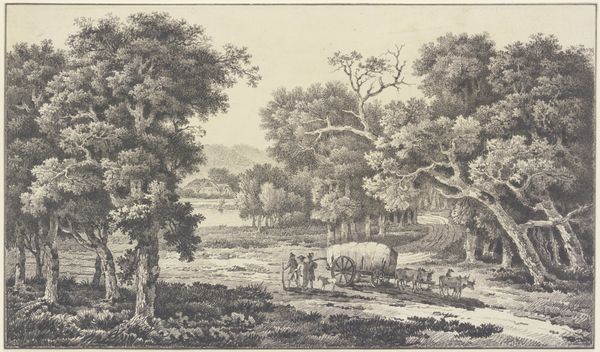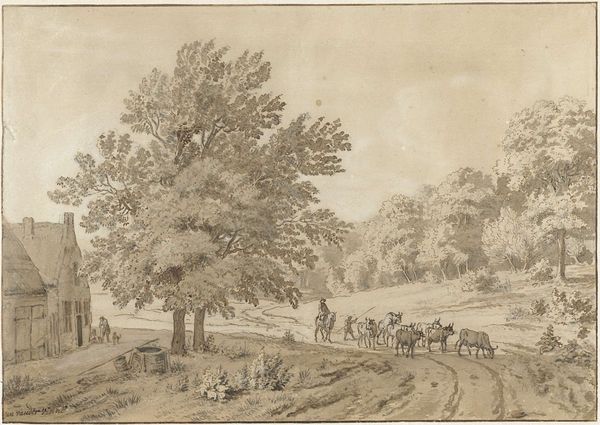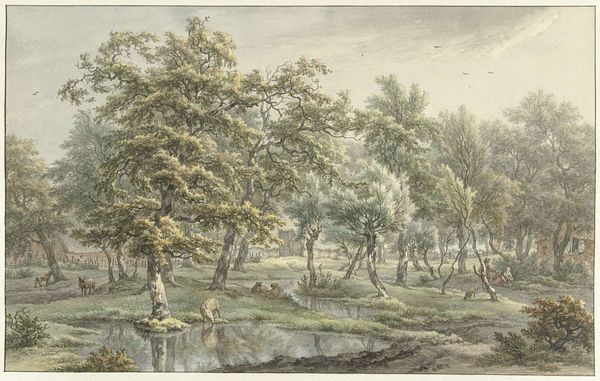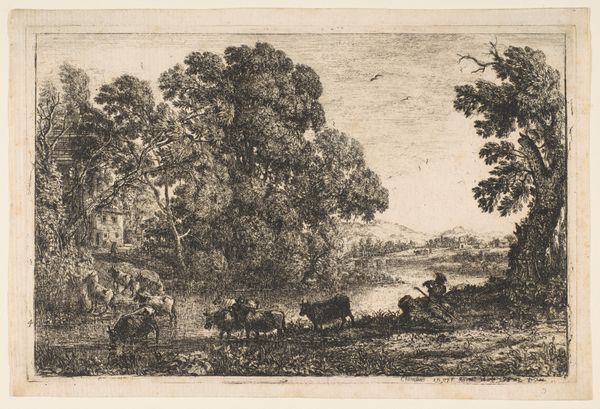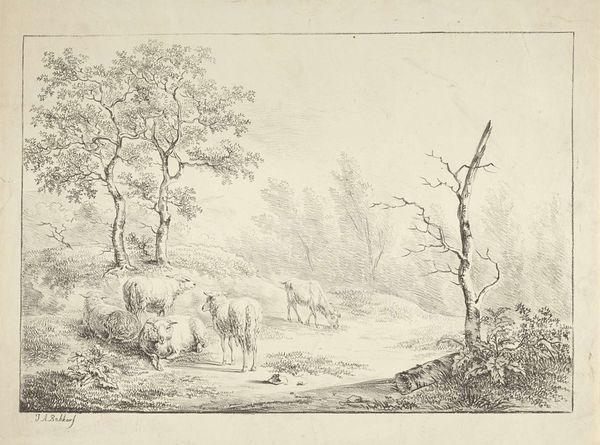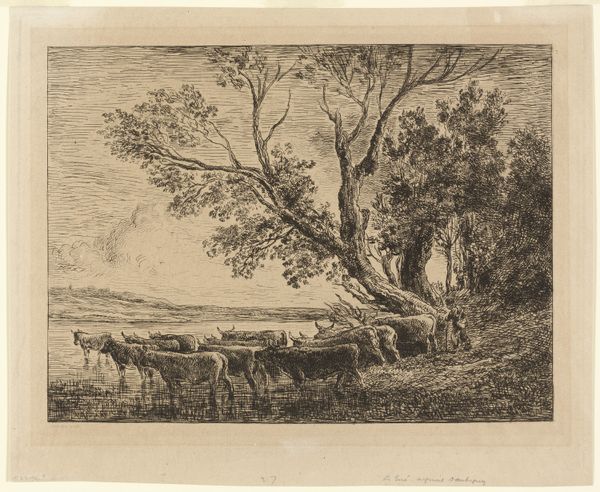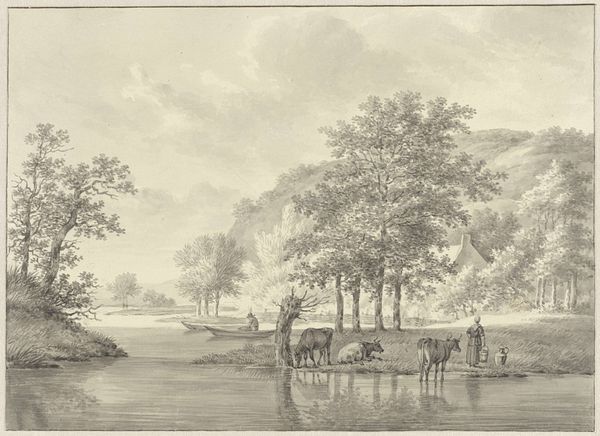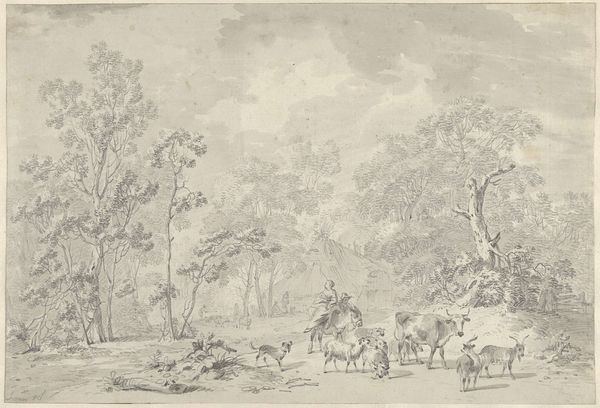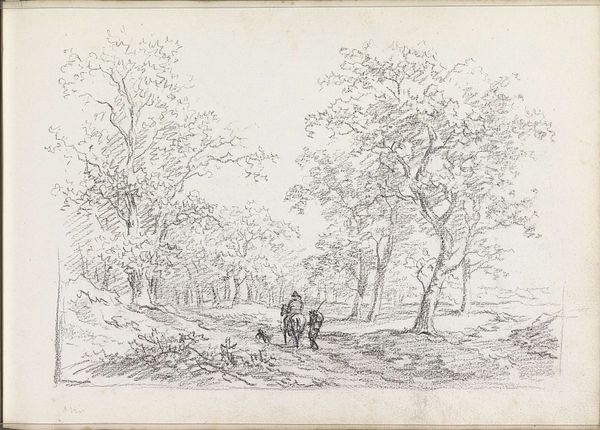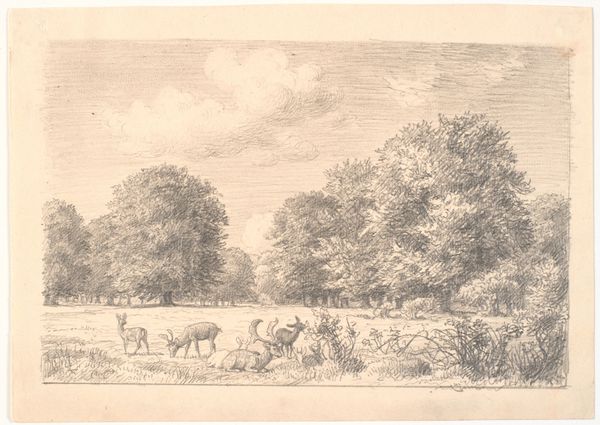
drawing, plein-air, watercolor
#
drawing
#
baroque
#
plein-air
#
landscape
#
watercolor
Copyright: Public Domain
Editor: This is "An einer Baumgruppe zwei Eselstreiber von hinten" – translated, Two Donkey Drivers Behind a Group of Trees – a drawing created in 1689 by Jan Vermeer van Haarlem the Elder. It's done with watercolor. It's just so subtle; I'm immediately drawn to the textures. What strikes you most about the piece? Curator: Formally, the most compelling aspect is how the artist utilizes the contrast between the densely packed trees on the left and the open, hazy vista on the right. The dynamism is established by the winding road, of course, which leads the eye from the foreground figures toward the distant architectural form. Note how that single, leaning tree serves to frame and almost propel the viewer's gaze across the scene. Editor: The way you describe it as dynamic makes me rethink my initial impression! I was focusing so much on the peaceful, muted palette. But the road really does create movement. Curator: Indeed. And observe how the varying shades of green – from almost chartreuse to near-black – establish spatial depth. The artist doesn’t rely on sharp lines or photographic realism but on tonal variation. Do you agree that this affects the overall composition? Editor: Definitely. Without the subtle changes in color, it could easily look flat. It's amazing how just a few hues can create such a rich scene. I hadn't really thought about how much color impacts the sense of space until now. Curator: Precisely. It’s the masterful orchestration of these elements, the chromatic modulations, and spatial relationships, that ultimately defines the work's enduring power. Editor: I'll definitely be paying more attention to those compositional elements from now on!
Comments
No comments
Be the first to comment and join the conversation on the ultimate creative platform.
